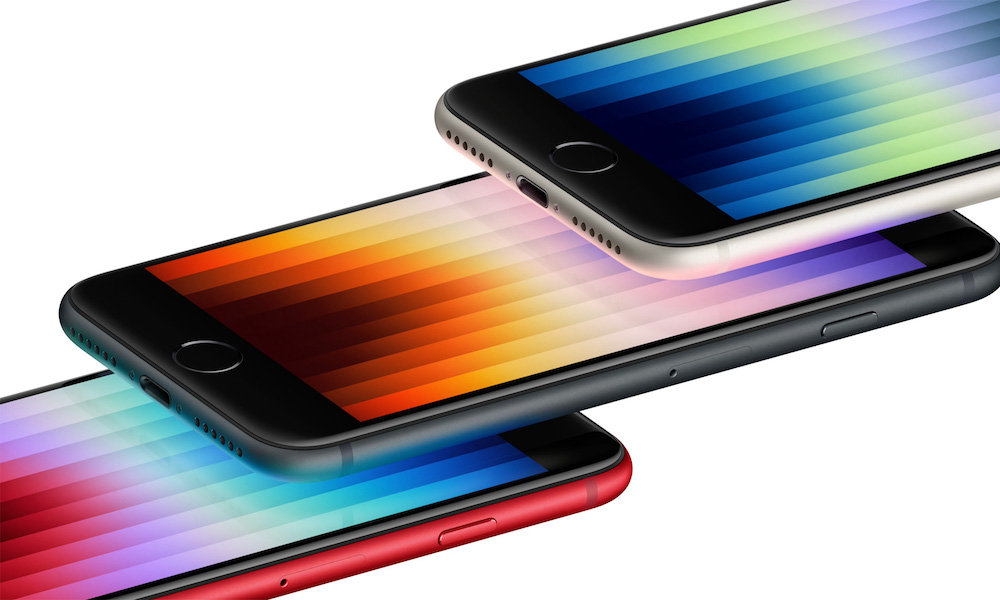FAQ | Is the New iPhone SE (’22) as Durable as Apple’s iPhone 13?
 Credit: Apple
Credit: Apple
Toggle Dark Mode
This year’s third-generation iPhone SE is something of an enigma when it comes to durability. Apple promises that it uses the “toughest glass in a smartphone,” and yet, it doesn’t appear to use the same Ceramic Shield formulation as Apple’s flagship iPhone 13.
In fact, while announcing the iPhone SE earlier this month, Apple pointedly avoided any comparisons to the front of the iPhone 13. Instead, the company said the iPhone SE uses glass that’s the same as that found on the back of the iPhone 13 and iPhone 13 Pro. While that’s certainly pretty durable glass, it’s not the same as the Ceramic Shield glass used on the front of those iPhone models.
It turns out that Apple’s comments may not have been entirely misleading. While the iPhone SE certainly doesn’t use Ceramic Shield glass, what it does use may still loosely qualify as the “toughest glass in a smartphone,” offering drop protection that’s nearly on par with Apple’s more expensive iPhone models.
A new series of tests conducted by Allstate (via AppleInsider) show that the $429 iPhone survives face-down and side drop tests just as well as the iPhone 13.
Allstate conducts these “breakability tests” with each new iPhone model that comes out, and they’re about more than just idle curiosity — they help the company determine what kind of insurance premiums it should charge for its phone protection plans.
This means that Allstate has a real incentive to make sure that an iPhone holds up to Apple’s claims of durability. The more breakable the glass is, the more likely the company will find itself paying out for costly repair claims.
In testing the 2022 iPhone SE, Allstate dropped an iPhone SE onto a sidewalk from a height of six feet in face-down, back-down, and side-down orientations.
iPhone SE (’22) Drop Test Results
When landing on its face and side, the iPhone SE suffered only minor scuffing, with not even a chip out of the glass. Allstate noted those results were “impressive” since it fared just as well as the iPhone 13, which uses Ceramic Shield glass on the front. The iPhone SE merely uses more typical hardened glass.
Perhaps ironically, even though the iPhone SE and the iPhone 13 models use the same back glass, the iPhone SE didn’t fare quite as well when landing on its back. In this scenario, researchers concluded that the protective aluminum frame on the iPhone 13 gave the more expensive phone its advantage.
Allstate also tested the IP67 rating of the iPhone SE, although the results here didn’t offer too many surprises. The affordable iPhone survived in one meter of water for 30 minutes without any serious problems, although the speakers held water and were a bit muffled as a result until they dried out.
Jason Siciliano, the VP of marketing and creative director for Allstate Protection Plans, lauded the new iPhone SE as being “a truly durable phone that doesn’t break the bank.” However, he also said that doesn’t mean you should go without a case. The iPhone SE may start at $429, but a basic screen repair will set you back $129 without AppleCare+. If the damage goes beyond the screen, those repair costs can run up to $299; that’s over a third of the cost of an entirely new iPhone SE.
AppleCare+ for the new iPhone SE costs $79, or $149 if you opt for the theft and loss option. That drops repair prices to $29 for screen damage or $99 for other repairs, good for up to two incidents of accidental damage per year.







